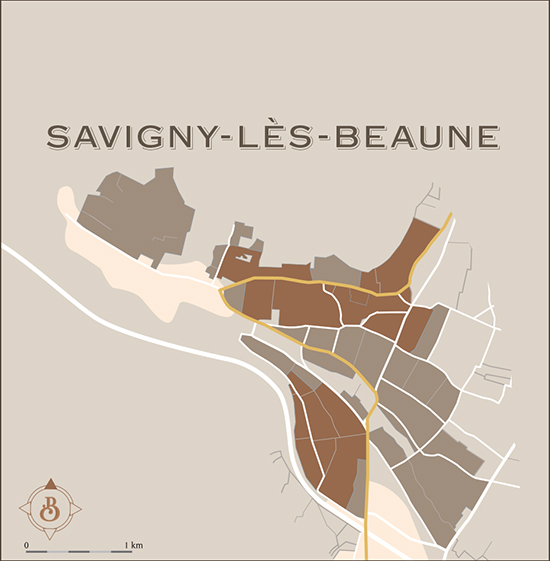Savigny-Lès-Beaune 2017
Balance and maturity are the two words that come to mind when Savigny’s vineyards are mentioned.
They are located three kilometres north of Beaune.
Origin
This appellation boasts 180 ha of “Village” appellation. Savigny’s vineyards form a V-shape and are located at the meeting place of a valley and the plain, offering some of the most picturesque scenery in the Côte d’Or. The style of the wines produced here varies due to differences in terroir though they all share the Savigny trademark: finesse, elegance, charm and heady aromas.
Our cuvée comes from the climat "Les Bas Liards", with a gentle slope, which is at the entrance of the village on the edge of the Rhoin river.
"Liard "comes from the Gallic " Liga " which means vase or silt. Ancient swamps. Rhoin river was much more abundant in the past.
Viticulture
Grape variety: pinot noir
Soils: fairly deep loamy soil.
Orientation: South
Surface area under vine: 0.7113 ha
Pruning: Guyot system
Yield: 45 hL/ha
Average age of the vines: 40 years old.
Vinification
Harvest date: 15 September 2017.
The grapes were handpicked. They were sorted a first time in the vineyard and again on the sorting table when they arrived at the winery.
At the winery: The grapes were 50% destemmed and were gravity-fed into tanks. Maceration lasted a total of 18 days including 3 days of cold maceration (12°C). Fermentation used indigenous yeasts only (no additives such as enzymes or tannins were used). 5 punchings of the cap.
Ageing
Maturation: aged on the lees for 18 months with no racking using a proportion of 35% new French oak barrels.
Barrels: French oak barrels that had been toasted at low temperatures for a long time to impart a very delicate touch of oa8 to the wine.
Bottling
Bottling: The wine was not fined but was very gently filtered before being bottled using gravity in May 2019.
Number of bottles: 4,290
Vintage
2017 – Finesse
The growing cycle was thrown off-kilter by a very cold winter, late spring frost, then optimal conditions for rapid flowering, sporadic hail, and summer drought. Harvesting began in early September in the sun, and after several lean years, the vines finally produced abundant grapes, although with significant differences in maturity between whites and reds and from one region to another, which called for strict sorting.
Ageing potential: from 5 to 7 years.
Tasting notes
The color is a beautiful ruby red. The nose exudes aromas of fresh red berries and violets. There are also some notes, some spicy and smoky notes. The palate, which combines suppleness and roundness, reveals a tangy frame.



